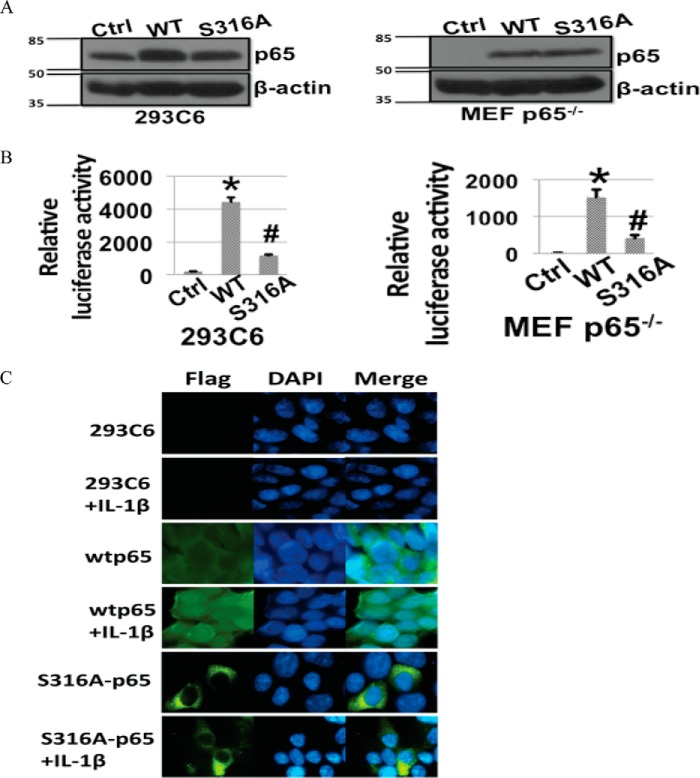FIGURE 2.
Effects of the S316A mutation on NF-κB activity. A, Western assays showing the overexpression of wtp65 and S316A-p65 in 293C6 cells (left panel) or in MEFp65−/− cells (right panel). The molecular marker is marked on the left. Units are in kDa. B, luciferase assay of NF-κB activity. Overexpression of wtp65 significantly activated NF-κB, whereas overexpression of the S316A-p65 mutant protein reduced this activity in both 293C6 cells (left panel) and MEFp65−/− cells (right panel). Results of triplicate luciferase assays are shown as the mean ± S.D. *, p < 0.01 versus control (Ctrl) group; #, p < 0.01 versus wt group. C, immunofluorescence, showing the localization of wtp65 and S316A-p65. Both FLAG-tagged wtp65 and S316A-p65 were probed with anti-FLAG antibody. DAPI was used for nuclear staining. In the wtp65 overexpression cell line, without IL-1β treatment the localization of p65 was observed in both cytoplasm and nucleus but mainly in the cytoplasm; however, after IL-1β treatment, p65 was largely translocated into the nucleus. In contrast, p65 translocation was substantially decreased in cell lines with S316A mutation in the presence or absence of IL-1β treatment, indicating that mutation at Ser-316 compromised the nuclear translocation of p65 subunit. Control 293C6 cell lines without overexpression of FLAG-tagged p65 did not show the expression of FLAG-tagged p65 and was used as a negative control.

